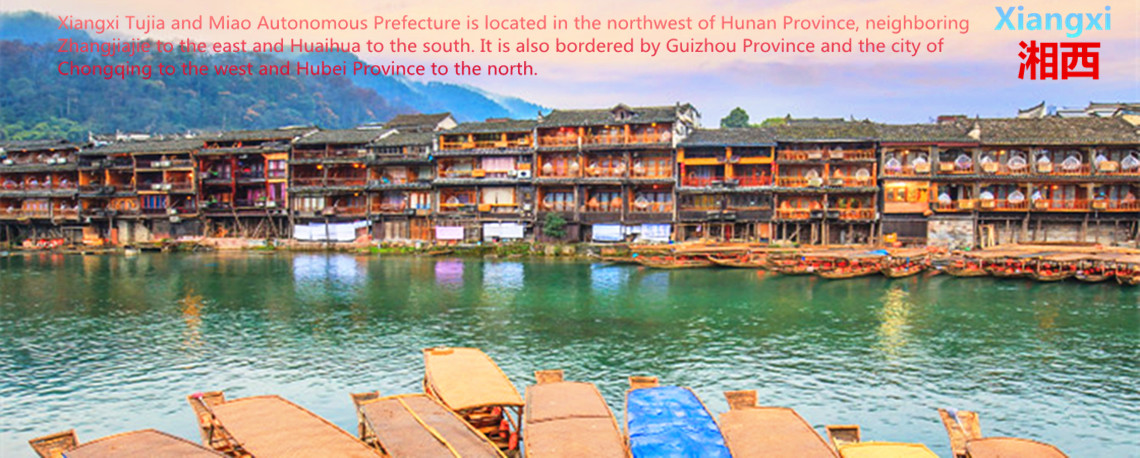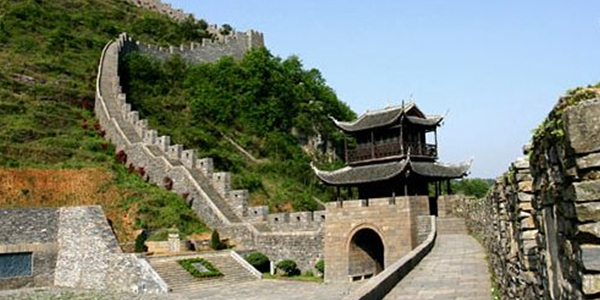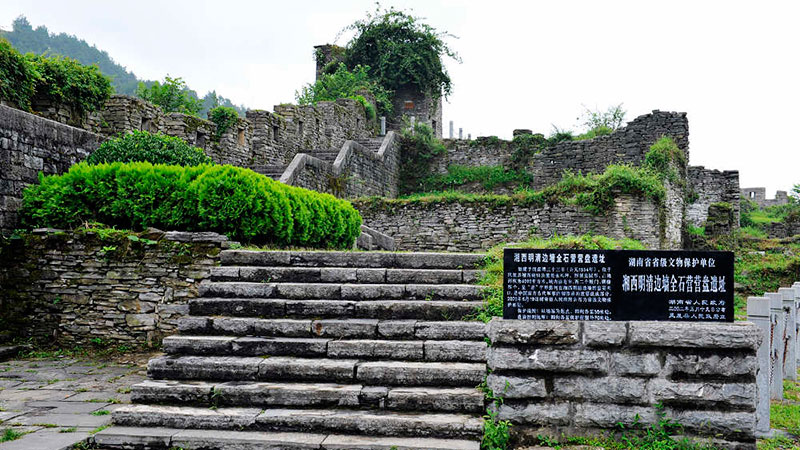Skype: neodalle-travel
Tel: +86 135 7447 2266
E-mail: sales@zhangjiajieholiday.com

The South Great Wall starts north from Xiqueying (Xique military camp) of Guzhang County in western Hunan Province and south to Huanghuiying (Huanghui military camp) of Tongren City in Guizhou Province. With a length of 190 miles with a reputation of "Thousands of Wall in Miao Area", It is one of the greatest ancient architecture in China.

The section of the South Great Wallfor visiting is located close to Huangsiqiao ancient town, about 10Km away from Fenghuang city. The rulers of the Ming Dynasty built it for the purpose of military usage to defend the kingdom against the Mio people of the south. The wall is about 3 meters high and its basement is about 2 meters wide. It revolves around mountains and cuts across water. The most part of it is built on the precipitous ridges.
The Southern Great Wall is short for the Great Wall in southern China and is famous for being the only Great Wall in southern China. It is situated in Xiangxi Autonomous Prefecture in Hunan Province. Therefore, it is called Miaojiang Great Wall (Great Wall of Miao Territory). With a total length of 190 kilometers, the Miaojiang Great Wall is situated in Fenghuang County and starts north of Xique military camp (also known as Danwu military camp) of Guzhang County in western Hunan Province and south of Tingzi Pass of Tongren City in Guizhou Province, and is mostly constructed on precipitous ridges.

In order to consolidate their power, rulers in the Ming Dynasty and the Qing Dynasty suppressed the minorities in southern China, especially the Miao ethnic group. The Southern Great Wall was a result of their suppression. For the sake of continuous ruling and suppression, the rulers came up with the evil plan of building walls and stationing troops to separate the place. They separated the Miao territory in western Hunan Province into northern and southern parts and prescribed that "the Miao ethnic group must not come out from their territory, while the Han ethnic group must not step into Miao territory". Thus, economic trade and cultural exchanges between the Han and Miao people was cut off. It was a pass consisting of blockhouses, watchtowers, sentry posts, emplacements, gates, and houses outside or near the gates, which was used to isolate and conquer the Miao ethnic group.
History of the South Great Wall
With the government's appropriation of 40,000 taels of silver, the Southern Great Wall was primarily built during the Wanli period of the Ming Dynasty. During the late Ming Dynasty, the sidewalls were razed by the Miao ethnic group. Then the Qing Dynasty rebuilt new walls on the site of the old sidewalls.
Scale and Border Defense
There are over 1,300 blockhouses, watchtowers, sentry posts, emplacements and gates for stationing troops and defenses, including more than 800 of those in Fenghuang County. At that time, 4,000-5,000 soldiers used to be stationed along the section. It even increased to 7,000 at the height of the population. The walls have a height of 3 meters, a width of 1 meter at the top and 2 meters at the base. Therefore, local places were mostly named after paotai (an emplacement), shao (a sentry post), qia (a pass), bao (a fortress), diao (a blockhouse), guan (a pass) and lying(a military campus).
Generally, the Southern Great Wall is smaller than the one in northern China and the stone of it is between one sixth and one tenth of that of the Great Wall in northern China. This is because the military power of the Miao ethnic group wasn't very strong and it was unnecessary to build it as firmly as the Great Wall in northern China.
The Southern Great Wall not only had similar defensive functions as the Ming Dynasty's Great Wall in northern China, but it also had a similar military organization and soldier system, which meant that it was a complete part of the Chinese Great Wall.
Travel Tips
 Ask Questions ?
Ask Questions ?